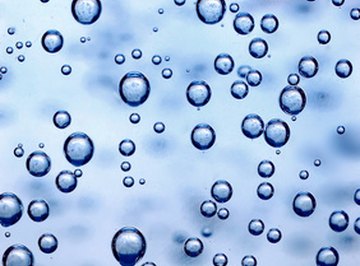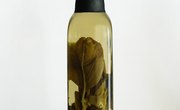
The Winkler titration method, developed by Hungarian analytical chemist Lajos Winkler in 1888, is a highly accurate method of measuring the amount of dissolved oxygen in water. Oxygen from the air dissolves in rivers, lakes and oceans, providing oxygen for fish and other aquatic life. The amount of oxygen in a sample of water from a particular location gives an indication of how much life the corresponding body of water can support and describes the condition of the aquatic habitat.
Scientists studying aquatic environments often take water samples and determine the amount of dissolved oxygen among other tests. Although there are modern automated methods for measuring dissolved oxygen, the Winkler method is so accurate it is often used to check the automated instruments.
TL;DR (Too Long; Didn't Read)
The Winkler titration method measures the amount of dissolved oxygen in water. It adds chemicals to the water samples to react with the oxygen, forming an acid solution. The amount of neutralizing agent required to neutralize the acid with titration indicates how much oxygen was in the original sample.
How the Winkler Titration Method Works
The Winkler method is a manual titration method for the determination of dissolved oxygen in a water sample. The analysis is often performed in the field to avoid delays that may result in a change in the oxygen content of the water. Until the oxygen is fixed with the addition of chemicals, it is important to make sure the water sample is not exposed to sources of additional oxygen.
To work with a 300-ml sample, a 300-ml stoppered bottle is filled with the water sample. Using a calibrated pipette, 2 ml of manganese sulfate and 2 ml of alkali-iodide-azide are added to the water sample. The pipette is placed with its opening just below the surface of the water to avoid introducing bubbles into the sample. The bottle is then stoppered so that no air is trapped under the stopper, and the sample is mixed by inverting the bottle several times. If bubbles are seen in the mixture, the sample is discarded and a new sample has to be prepared. If there is oxygen in the water, an orange-brown precipitate will form.
After the precipitate has settled out, the bottle is inverted and the precipitate left to settle again. Using a calibrated pipette, 2 ml of concentrated sulfuric acid is added to the water sample by holding the pipette just above the water surface. The bottle is stoppered again and inverted so the sulfuric acid can dissolve the precipitate. The oxygen in the water is now fixed because it has reacted with the introduced chemicals.
To determine the oxygen content of the original sample, some of the water with the fixed oxygen is titrated to neutralize the acid. In a new flask, 201 ml of sample is titrated with sodium thiosulfate to a pale straw color. For the final indication of neutralization, 2 ml of a starch solution is added, and the mixture turns blue. The neutralizing solution must be added very slowly, drop by drop, and mixed into the sample completely after each drop. At the end point of the titration, one drop is often enough to turn the mixture from blue to clear.
When the mixture is clear, the acid has been neutralized and the amount of neutralizing sodium thiosulfate used is exactly proportional to the amount of oxygen in the original sample. In the above titration, each ml of sodium thiosulfate equals 1 mg/L of dissolved oxygen content.
Applications of the Winkler Method
Studying the oxygen content of the water in lakes and rivers provides information about the aquatic ecosystem. When oxygen content is high, the water can support a variety of aquatic life such as fish, plants and micro-organisms. When the oxygen content of the water sample is low, the cause can be investigated, and perhaps solutions can be found. Typical causes for low oxygen content include decaying matter, the presence of pollutants or a lack of aeration due to lack of movement of the water.
While automated methods can be used, the manual Winkler method can easily be carried out in the field using special oxygen testing kits, and it doesn't require electric power or other lab equipment.
References
About the Author
Bert Markgraf is a freelance writer with a strong science and engineering background. He has written for scientific publications such as the HVDC Newsletter and the Energy and Automation Journal. Online he has written extensively on science-related topics in math, physics, chemistry and biology and has been published on sites such as Digital Landing and Reference.com He holds a Bachelor of Science degree from McGill University.
Photo Credits
Clean water and water bubbles in blue image by Suto Norbert from Fotolia.com
